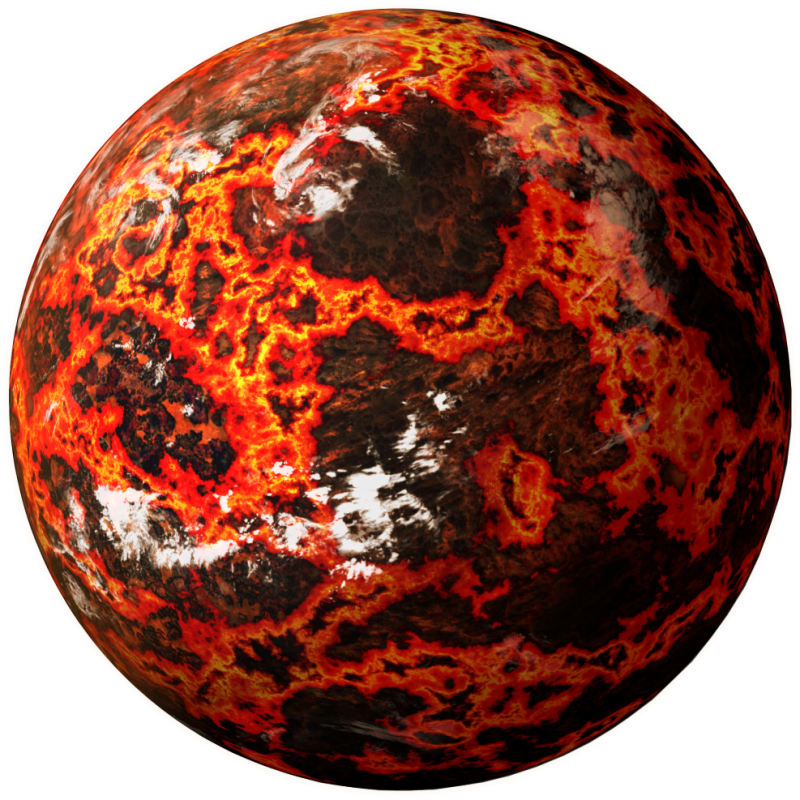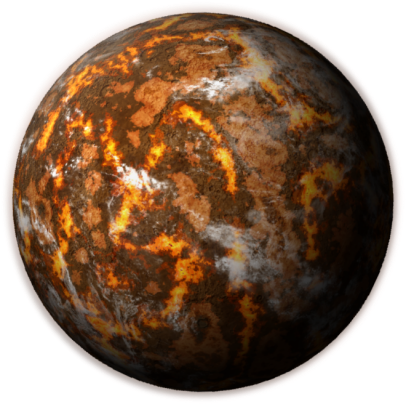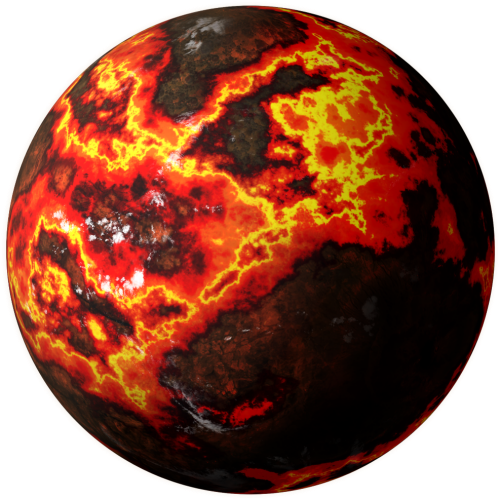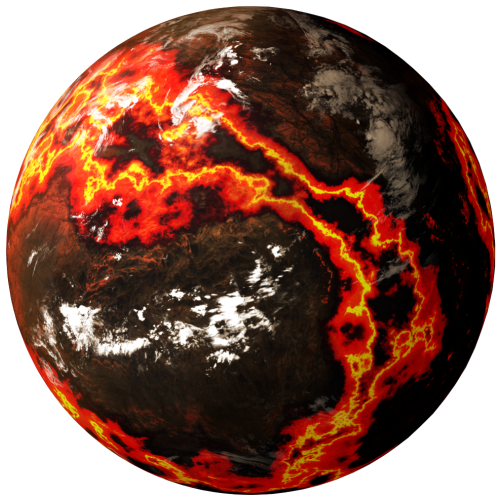
Class E planets represent the earliest stage in the formation of a
habitable world, and are commonly found in newly formed star
systems, often within a few thousand years of the parent star's
formation.
Though similar in appearance to the volcanic Class A worlds, Class
E planets are actually molten due to the heat generated by the
collision of the many millions of rocks and asteroids that came
together in the formation of the planet. Additionally, Class E
worlds are many times larger than Class A, and typically have
much longer and more varied lives.
Over the course of several billion years, the crust will cool and
solidify, and the hellish geoplastic world will slowly transition into
a Class F: geometallic one.
habitable world, and are commonly found in newly formed star
systems, often within a few thousand years of the parent star's
formation.
Though similar in appearance to the volcanic Class A worlds, Class
E planets are actually molten due to the heat generated by the
collision of the many millions of rocks and asteroids that came
together in the formation of the planet. Additionally, Class E
worlds are many times larger than Class A, and typically have
much longer and more varied lives.
Over the course of several billion years, the crust will cool and
solidify, and the hellish geoplastic world will slowly transition into
a Class F: geometallic one.



